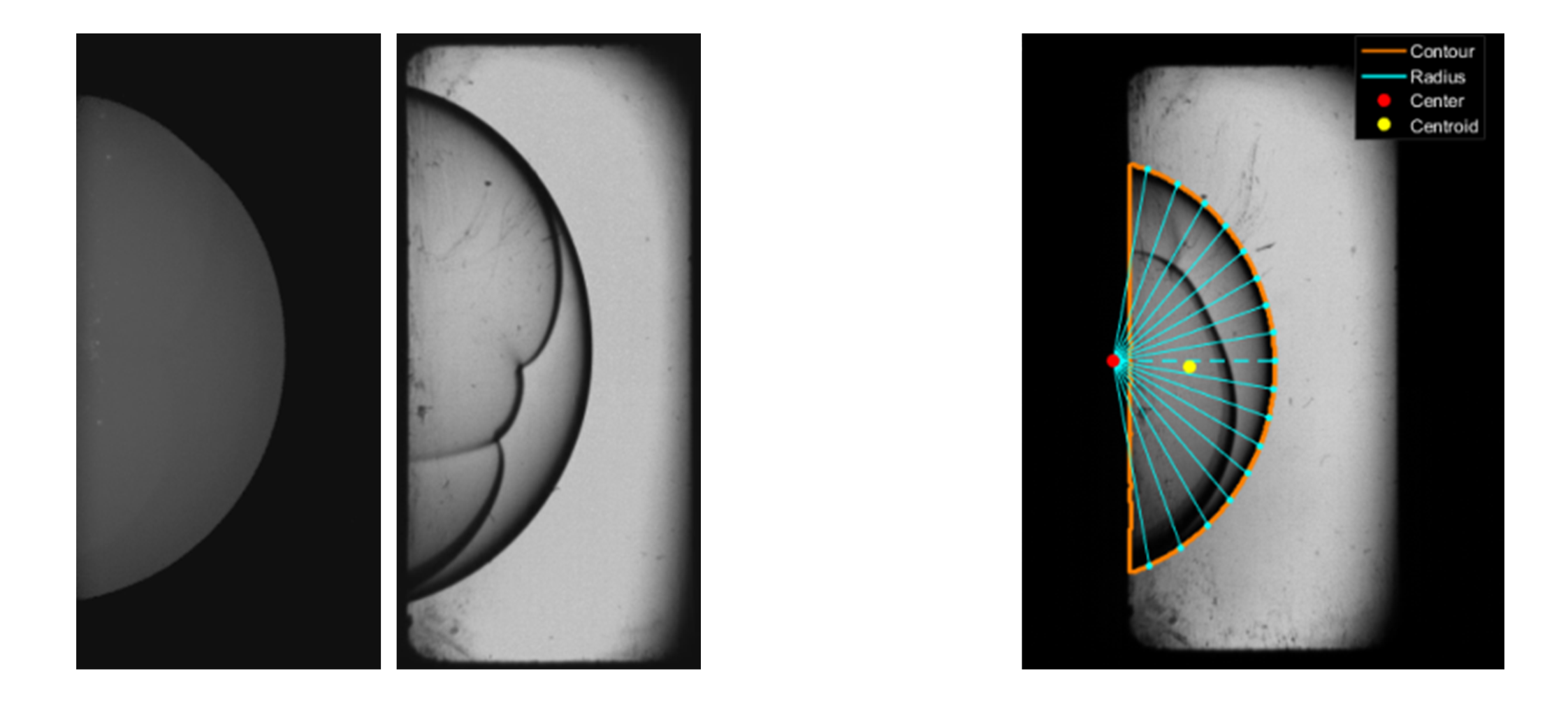Investigation of Ignition and Combustion Processes on a Rapid Compression-Expansion Machine (RCEM)
With the Rapid Compression-Expansion Machine (RCEM) fundamental investigations in the area of of ignition, combustion and knocking processes in combustion engines can be realized. Due to the missing crank drive, this machine can be used to simulate individual combustion cycles with great flexibility in terms of piston stroke, compression ratio and gas composition. The piston is driven by compressed air at the rear and is thus moved ballistically. The valve-free cylinder head allows many degrees of freedom when installing various hardware (injection equipment, ignition system, sensors, etc.). In addition, the processes in the combustion chamber can be excellently optically recorded through various windows.

Figure 1: Design of the RCEM (left) und schematic drawing of the combustion chamber (right)
Currently, the RCEM is used for the fundamental investigation of ignition and combustion processes of premixed gas-air mixtures using electric spark ignition. These investigations serve on the one hand to gain a deeper understanding of the complex processes in the combustion chamber and on the other hand offer the possibility to validate simulation models (e.g. in 3D CFD simulation) by means of the generated measurement data.
For the investigations extensive measurement technology was applied at the RCEM. Since July 2017, an oscilloscope from Yokogawa with sampling rates of up to 10 MS/s has been available for the temporally high-resolution acquisition of all relevant measured variables such as combustion chamber pressure, piston travel as well as voltages and currents at the ignition system. For the optical recording of the processes in the combustion chamber, the tried and tested high-speed camera from Photron is used. As an example, Figure 2 shows the results of current investigations of laminar flame front propagation in CH4 air mixtures.

Figure 2: Broadband and Schlieren image of the flame front propagation (left) and evaluation of the image data by means of contour recognition (right)
The comparison of broadband and Schlieren images (Figure 2, left) has generally shown that the optical detection of the flame front by recording the flame natural light requires long exposure times due to the comparatively low light emission and therefore requires low image frequencies. When using the Schlieren technique, however, short exposure times and high image frequencies can be used due to the strong external light source. In addition, the contour of the flame front is clearly visible throughout with this technology, which facilitates automatic contour recognition when evaluating the image data (Figure 2, right).